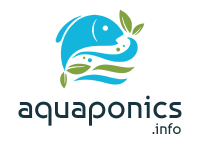This is a warm water fish whose ideal water temperature is 23°C – 28°C and requires clean water. It is a viable, popular commercial aquaculture fish that can be densely stocked is very adaptable but breed only once. They hatch at sea have slow growth and are carnivorous.
The worldwide Eel farming aquaculture industry is extensive. It is estimated that the industry is currently worth over US $1 billion. Eel farms produce approximately 60% of the eel presently consumed. Eel provides tasty and nutritious meat and growing eels to be sold for meat can be lucrative.
Eels grown in specialized tanks that recirculate the water prefer water temperatures between 23°C and 28°C. This ensures optimal growth and health.
In hotter climates, eels need water coolers in small systems, large shaded tanks, or very large fish tanks that keep a constant temperature. In cool climates, the commonest farming method is by of heated tank systems. Very large tanks can be heated by means of solar or geothermal heating methods. Very large tanks produce a high yield of eels and considerable profit. The tanks can be made in or above ground from concrete or fiberglass. They must include filtration systems to remove debris such as feces and waste food particles from the water.
For the most intensively farmed eels, tanks that incorporate recirculation systems are mostly used. The tank system requires access to a large amount of clean water, needed to recirculate around the tanks to keep them aerated and clean. An electricity supply is also required to heat the water to the optimal temperature and to pump the water around the system.
Valliculture is a method used in some countries. It is a means of utilizing natural areas of the coast to grow the eels much like saltwater fish farming. The method includes making use of natural lagoons, or weirs to keep the eels from the open waters. This method is popular in the Mediterranean region. It makes harvesting easy.
In ponds or tanks, grading must take place regularly to reduce competition for food and cannibalism. On average, every 6 weeks, the eels must be separated into different size categories by grading machines.
A protein diet is an essential requirement for eels. The right food is important and commercial foods are widely available. These foods consist of high-quality fish proteins, oils, and nutrients in a protein paste for young eels and pellets for older eels.
The high volume of eels on protein-based food means cement fish ponds or fiberglass tanks become dirty quickly. This can cause much stress for the eels and sickness ensues. Recirculation and filtration to provide clean water are essential.
Conclusion
Ideal water temperature: 23°C – 28°C
Viable, popular commercial aquaculture, densely stocked, warm water fish, require clean water, adaptable, breed only once, hatch at sea, slow growth, carnivorous

